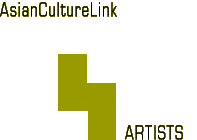Gene Coleman, born December 4th 1958, is a composer, bass clarinetist and
visual artist. In 1979 he began to study painting and film at the School of
the Art Institute in Chicago; later he gradually began to turn to music. His
encounters with Anthony Braxton and Mahal Richard Abram played a crucial role
in his musical development. Since that time Coleman explored new music in
all its facets. In 1987 he founded the new music group Ensemble Noamnesia,
to which he still belongs. It cultivates a broad repertoire from classical
modernism to contemporary improvisation. Many renowned institutions have commissioned
Coleman compositions, including the Klangforum Wien, the Ernst von Siemens
Foundation and Trio Accanto. Coleman has written more than 40 works for various
arrangements, in which passages of precise notation often alternate with improvisational
parts. With the radical use of expanded instrumental sound production Coleman
works toward a synthesis between sound, noise and music.
Coleman has received scholarships and grants from the National Endowment for
the Arts, Meet the Composer and the Jory Foundation. In 2001 the Japan US
Friendship Commission financed an extended work stay in Japan. Coleman has
performed improvised music with Evan Parker, Derek Bailey, Radu Malfatti and
Taku Sugimoto, among others. The ensemble Noamnesia has worked with such composers
as Helmut Lachenmann, Gerhard Staebler, Salvatore Sciarrino, George Crumb,
Luc Ferrari and Vinko Globokar. Since May 2000 Gene Coleman has acted as the
director of Sound Field, a Chicago festival for new and experimental music.
Beginning in 2003 he will curate the newly initiated festival transonic at
House of World Cultures in Berlin. A radio portrait broadcast in 1996 by the
Chicago station WNUR-FM contains the following description of Coleman’s
open working methods: “Coleman seems to have found a place for himself
at the exact point of contact between several deeply-rooted pairs of opposites:
‘then’ versus ‘now’, pop versus classical, the modernism
of the fifties versus the 19th century, the United States versus Europe, Chicago
versus New York …”


